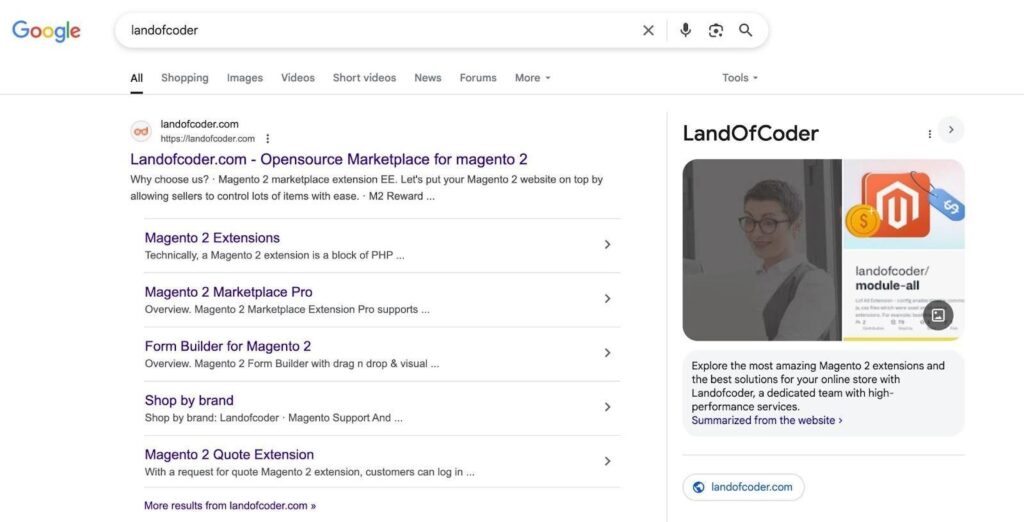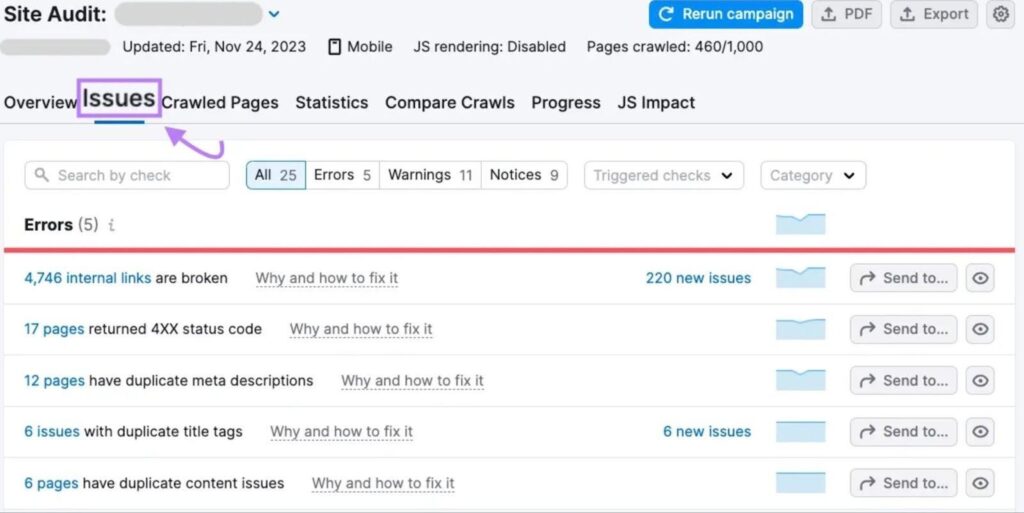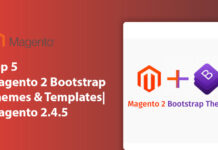
You’ve built your store on Magento—congratulations! Now it’s time to get more eyes on your products. SEO (search engine optimization) helps people find your site when they’re shopping online.
With the right SEO tips for Magento-based websites, you can boost your rankings, draw in more visitors, and turn those clicks into sales. That’s exactly what you’ll get in this useful post.
I will take you through some of the most effective SEO tips you can use to boost the performance of your Magento-based website. So, let’s get right into it.
Table of Contents
I. Set a Preferred Domain for Your Magento-Based Website
Your website can usually be accessed with or without “www” — like www.yourstore.com and yourstore.com. Search engines treat these as two different websites. This can confuse Google and split your traffic.
Pick one version, either with “www” or without, and stick to it to ensure that two versions of your website don’t compete with each other. This is one of the most basic SEO tips for Magento-based websites that you should definitely follow.
Here’s how you can do it.
- Log in to your Magento Admin Panel
- Go to Stores > Configuration > Web
- Under Base URLs [and Base URLs (Secure) for HTTPS], check your website address
- Choose your preferred URL and save it
Also, set up a redirect in your hosting or server settings so that any traffic to the non-preferred version automatically redirects to your main one.
If you want to check which version of your website is being indexed, simply search for it on Google. For example, if I search for “Landofcoder” on Google, this is the result I get:

II. Enable and Configure Canonical Tags for Products and Categories
In Magento, the same product can appear under different categories. This creates multiple URLs for the same product, which makes search engines think you have duplicate content.
Canonical tags help tell Google which URL is the main one. This is another one of the SEO tips for Magento-based websites that helps avoid duplication issues.
Here’s a simple step-by-step process to apply this expert SEO tactic.
- Go to your Magento Admin Panel
- Click on Stores > Configuration > Catalog > Catalog
- Scroll down to the section called Search Engine Optimization
- Set both options to Yes:
- Use the canonical link meta tag for Products and Categories
- Click on Save Config
III. Use Tiered XML Sitemaps for Your Magento-Based Website
An XML sitemap is like a list you give to Google that shows all the pages on your website that you want search engines to crawl and show in search results. It’s literally a map of your website and all that it contains.
But if your website has a lot of products, putting everything in one big list can be messy and hard to manage.
That’s where tiered XML sitemaps can help. Using tiered sitemaps helps you break that big list into smaller parts, such as one sitemap for products, one for categories, and one for CMS pages. This helps Google and other search engines crawl your site more efficiently.
You’ll need to go to Stores > Configuration > Catalog > XML Sitemap to create sitemaps.
Magento creates one “master” sitemap file that links to all the smaller ones. Submit this main file (usually sitemap.xml) to Google Search Console.
IV. Use SEO-Friendly Alternatives to Default Layered Navigation URLs
Magento lets shoppers filter products by color, size, price, and more. That’s great for users, but the default URLs Magento creates for these filters look like this:

yourstore.com/shoes.html?color=red&size=10
These URLs are long, messy, and not search-friendly. Google doesn’t like them, and they can create lots of similar pages that may hurt your SEO.
That’s why one of the most effective SEO tips for Magento-based websites is to simplify these URLs.
Use Magento extensions like Mirasvit SEO and Mageworx SEO Suite that make these URLs cleaner and more SEO-friendly.
V. Optimize Your Content with the Right Keywords
Keyword optimization is one of the most basic SEO tips for Magento-based websites or any other websites. It applies to all and is extremely important, which is why Attrock has listed it as an important step in any SEO strategy.
Keywords are the words people type into Google when they’re searching for something. If your product titles and descriptions don’t include those words, your store might not show up in search results even if you sell exactly what they want. Using tools like Moz can help you identify the right keywords to include, improving your chances of appearing in relevant searches.
Here’s what you can do.
- Research keywords your customers actually use by checking Google Keyword Planner or Ubersuggest, then group them by product type or category.
- Add your primary keyword to each product’s URL Key in Catalog > Products so the page link reads nicely (e.g. men-cotton-tshirt rather than product1234).
- Write unique meta titles for every product and category. Include your main keyword near the front and keep it under 60 characters.
- Craft clear Meta Descriptions (around 155 characters) that use your keyword once and summarize what shoppers find on the page.
- Sprinkle secondary or related keywords naturally into your product descriptions. You can also boost your store’s visibility off‑site by participating in a link building community, such as a Slack group where ecommerce and SEO professionals share backlink opportunities. Also, make sure you write keyword‑optimized alt‑text for all images.
- Also, make sure you write keyword-optimized alt-text for all images.
Follow these to create a high-converting ecommerce store on Magento.
VI. Compress and Optimize Your Website Images
One of the most important SEO tips for Magento-based websites is to compress images because large files can slow your website. As you know, a slow website can frustrate your site visitors and may even cause them to leave without taking any action.
If more people bounce off your site, it sends bad UX signals to Google, which will then rank your website poorly. That’s why you need this in the SEO plan for your website.
If you want to avoid the whole fiasco, follow these SEO tips for image optimization.
- Resize your images to the exact dimensions you need before uploading.
- In Stores > Configuration > Advanced > Developer, set your Image Resize Dimensions in view.xml to match your theme’s layout, ensuring Magento generates properly sized thumbnails.
- Compress each image with tools like TinyPNG or Squoosh before uploading to cut file size without losing visible quality.
- Turn on lazy loading (many Magento 2 themes do this by default) so images below the fold load only when a visitor scrolls down.
VII. Audit and Fix Duplicate Meta Titles/Descriptions
Last on our list of SEO tips for Magento-based websites is fixing duplicate meta content issues.
Meta titles and descriptions are what show up in Google search results. If many of your products or pages use the same ones, Google may not know which page to rank. This is especially important for highly competitive industries like the best US software dev firms, where clear and unique metadata can make a significant difference in visibility. It might even ignore your site altogether for that keyword.
So, make sure you run regular site audits to avoid such duplication issues and ensure the right pages rank for their target keywords. Use SEO tools like Semrush to conduct such audits. Here’s a screenshot of Semrush showing how it identifies duplicate meta descriptions.

Conclusion
With these useful SEO tips for Magento-based websites, you can considerably boost your SERP results and overall performance.
From clean URLs and canonical tags to optimized images and unique meta content, each step builds stronger visibility and a smoother user experience.
Start applying these tips one at a time, track your improvements in Google Search Console, and watch your rankings—and your sales—rise. Good luck, and happy optimizing!











![[SALE OFF] Discount 30% All Premium Extensions On Christmas And New Year 2025 christmas-and-new-year-2025](https://landofcoder.b-cdn.net/wp-content/uploads/2024/12/christmas-and-new-year-2025-1-218x150.png)






